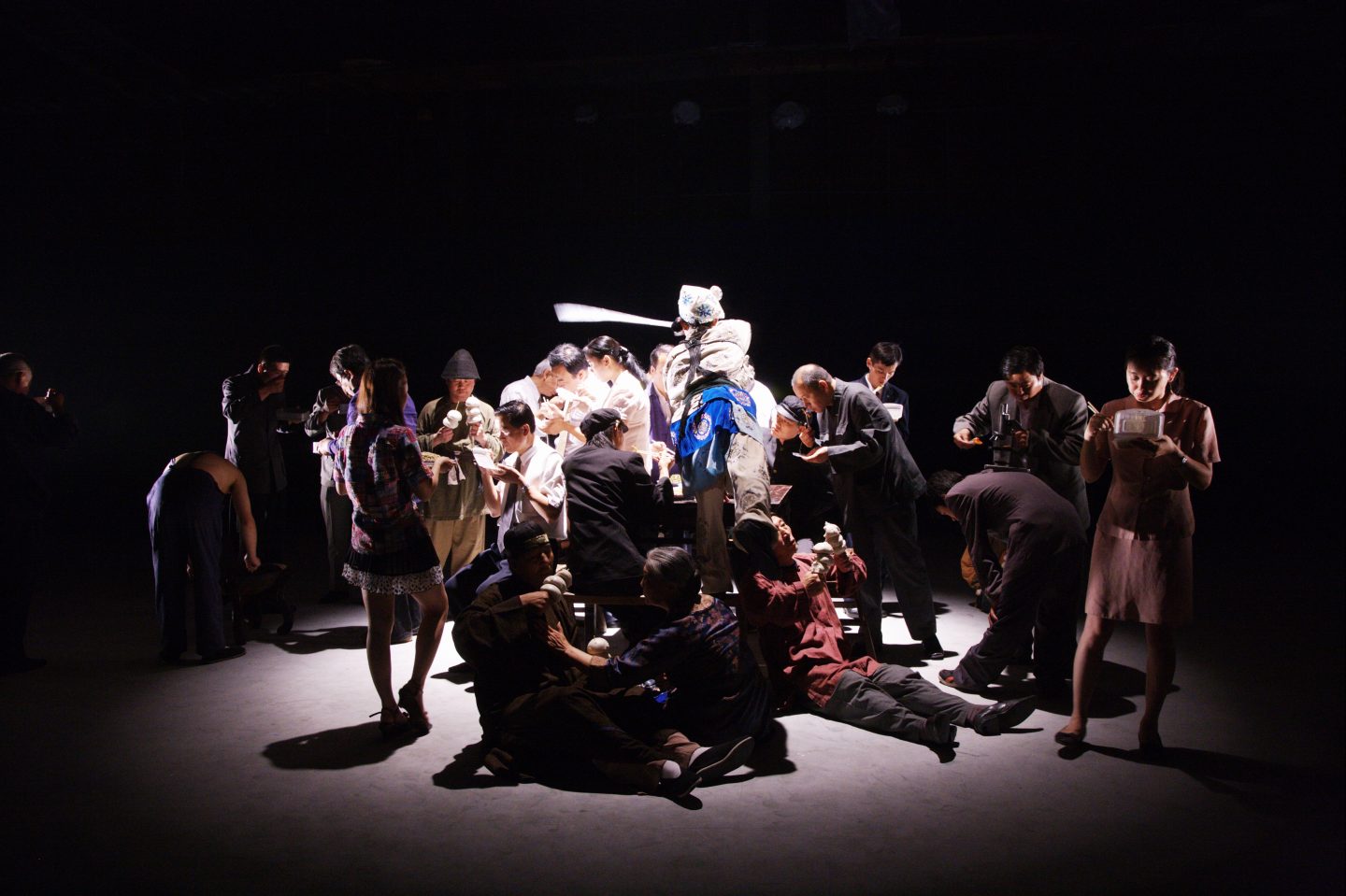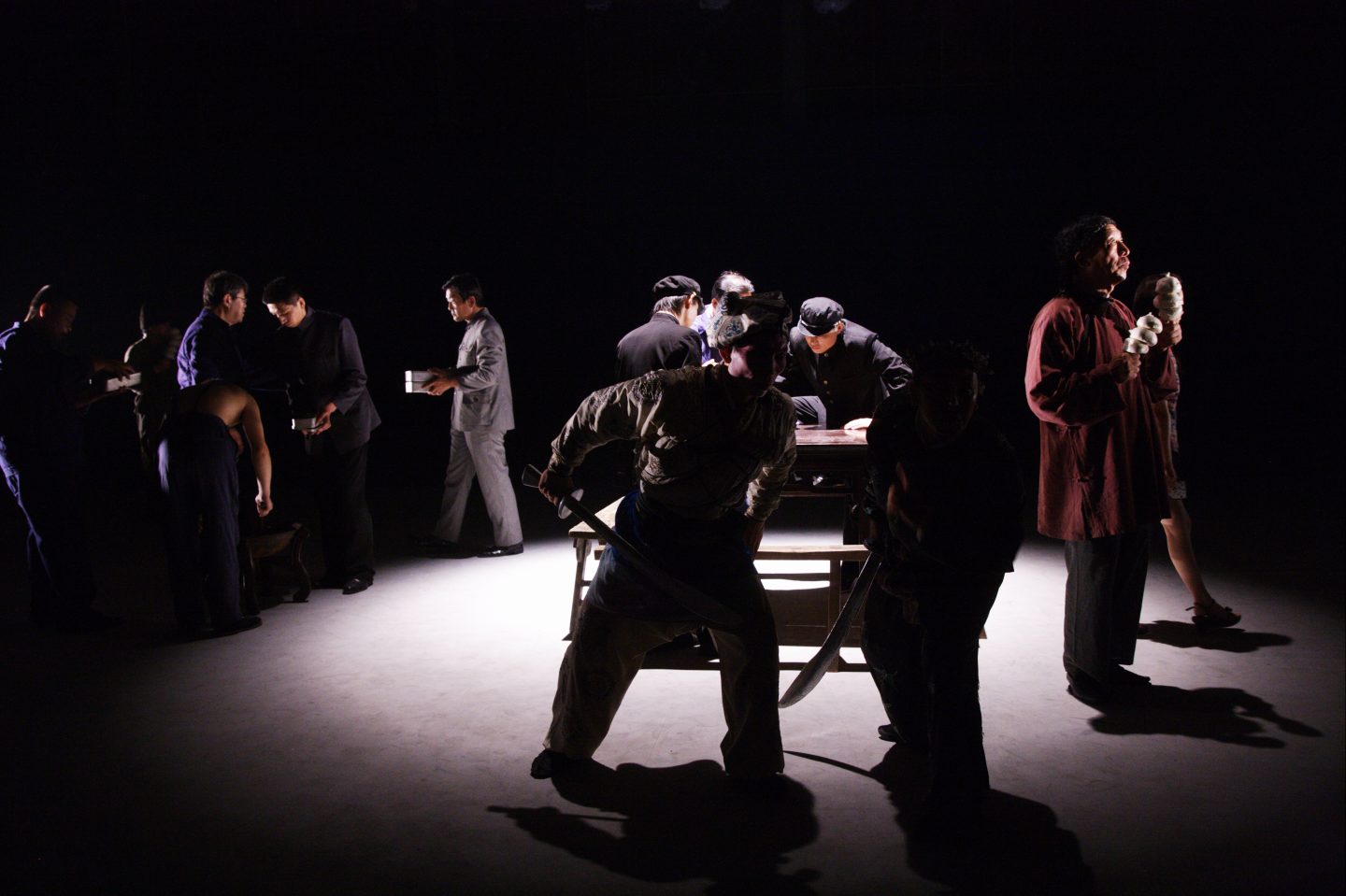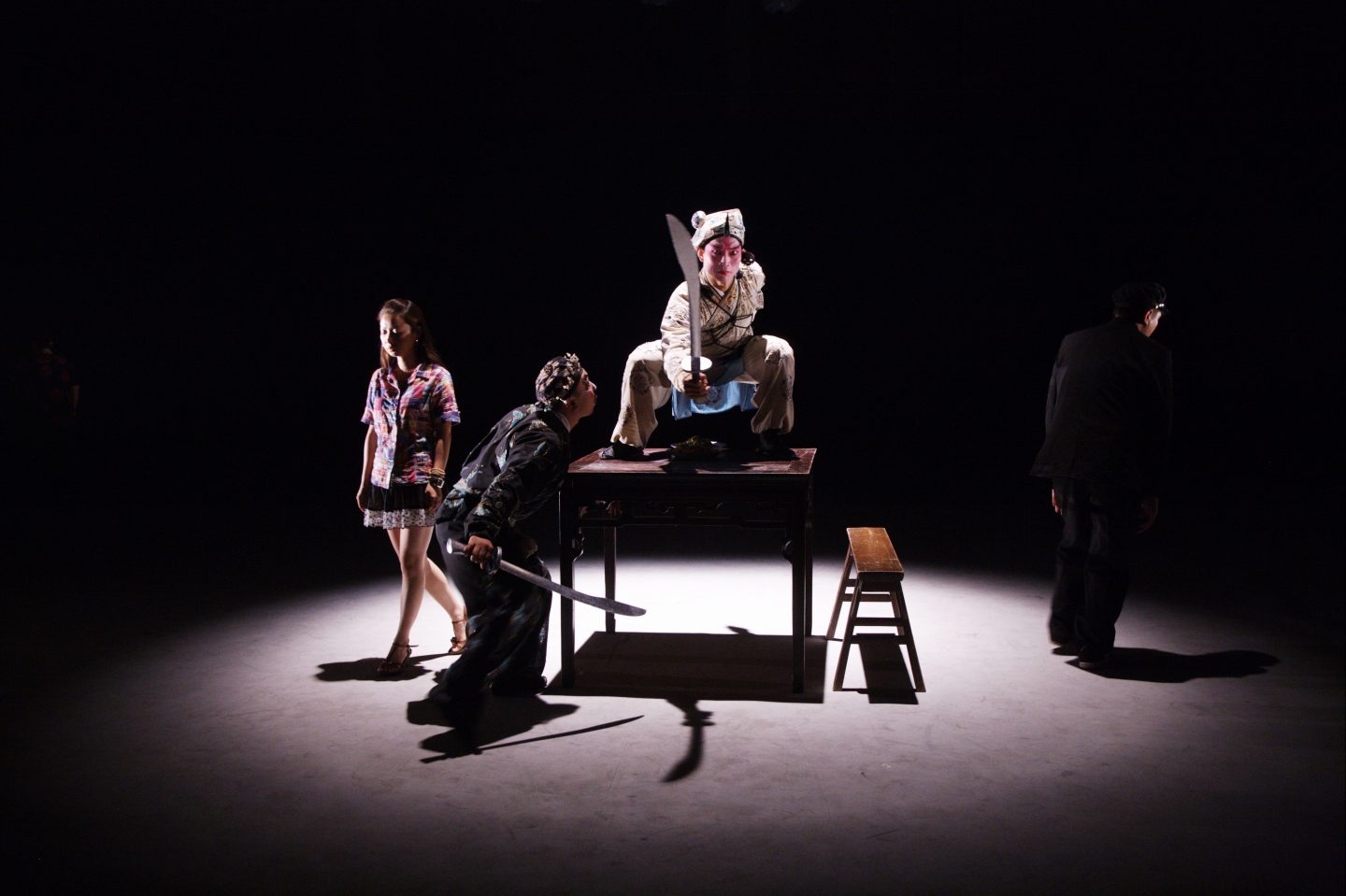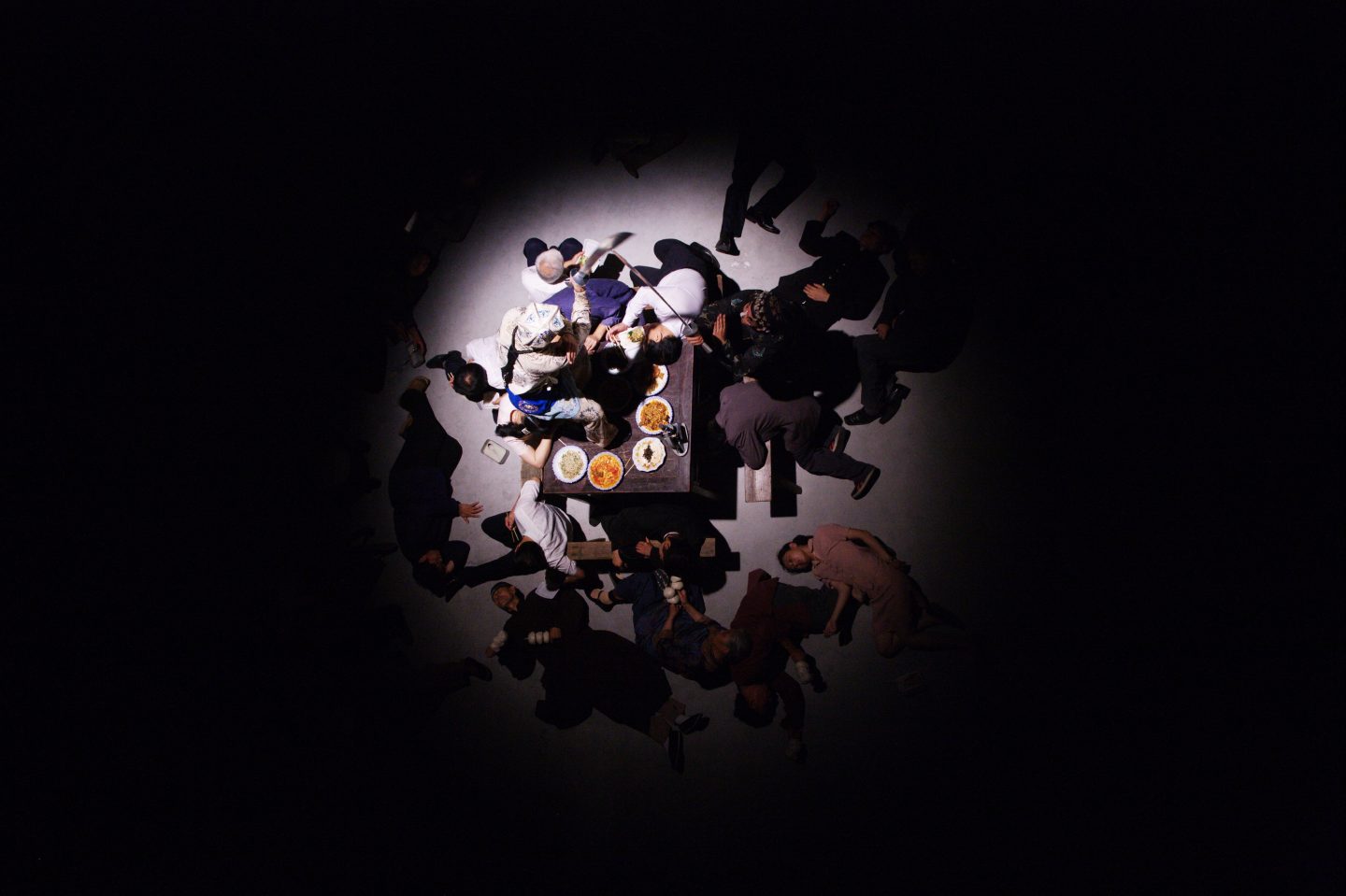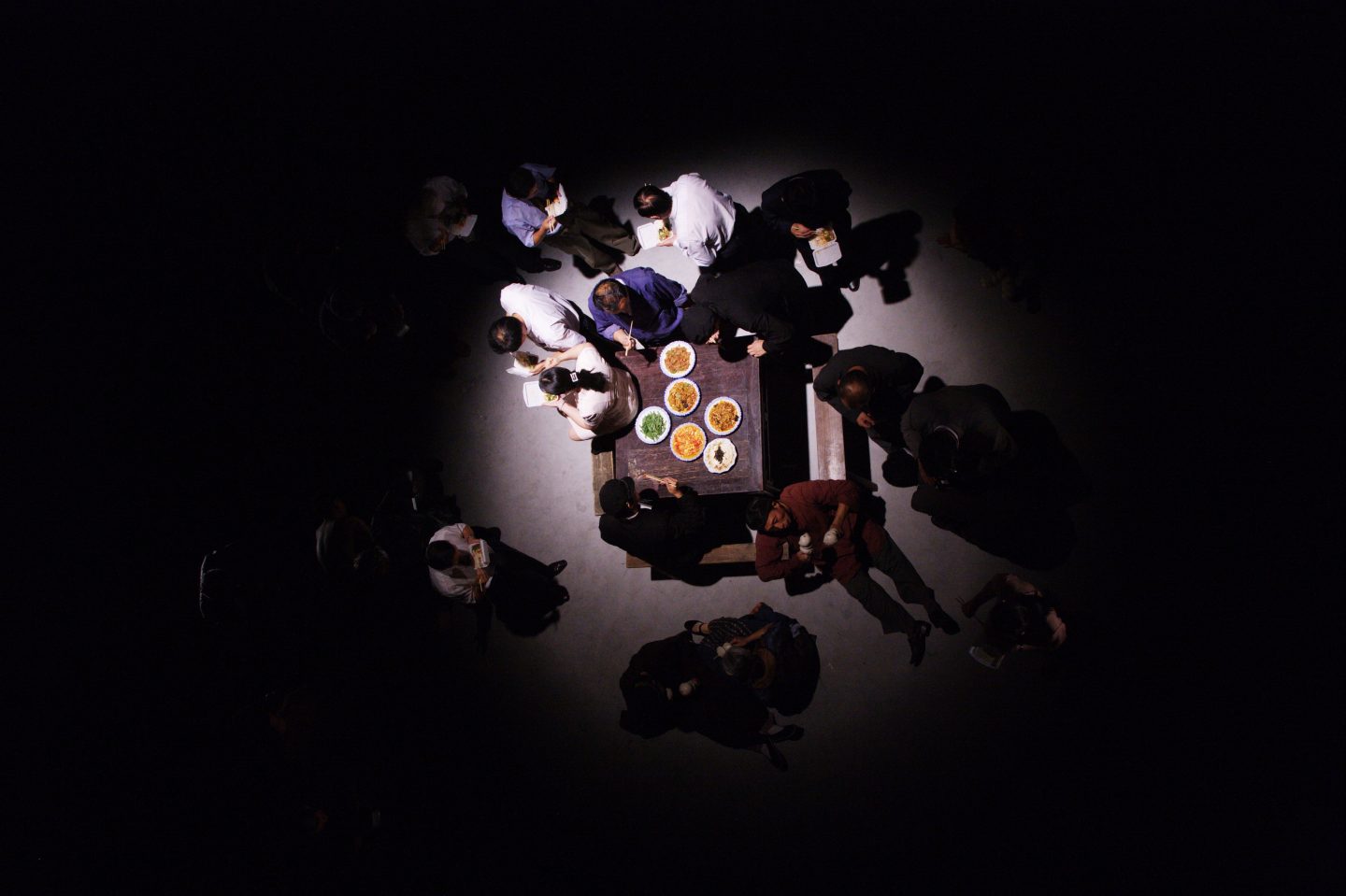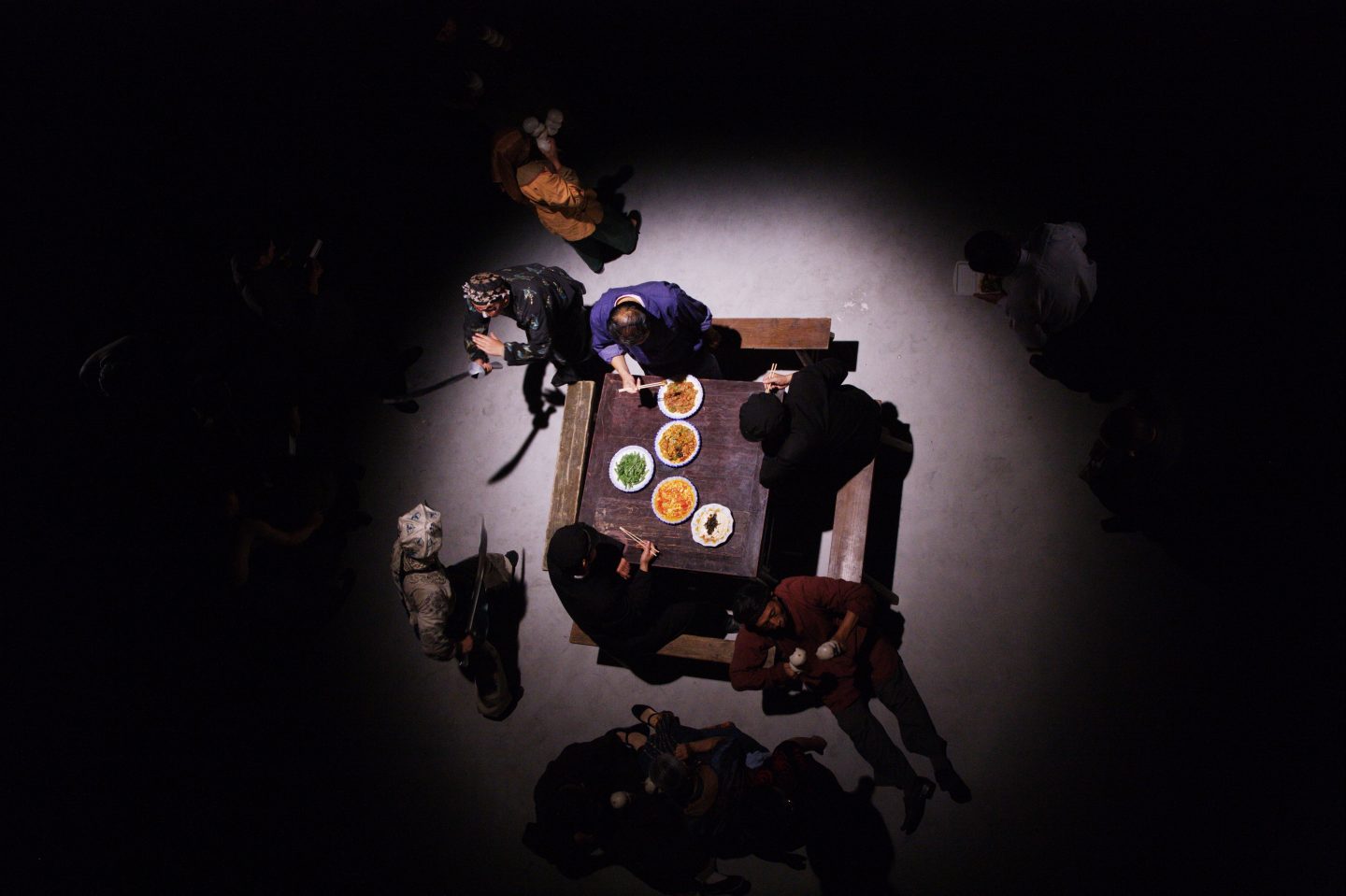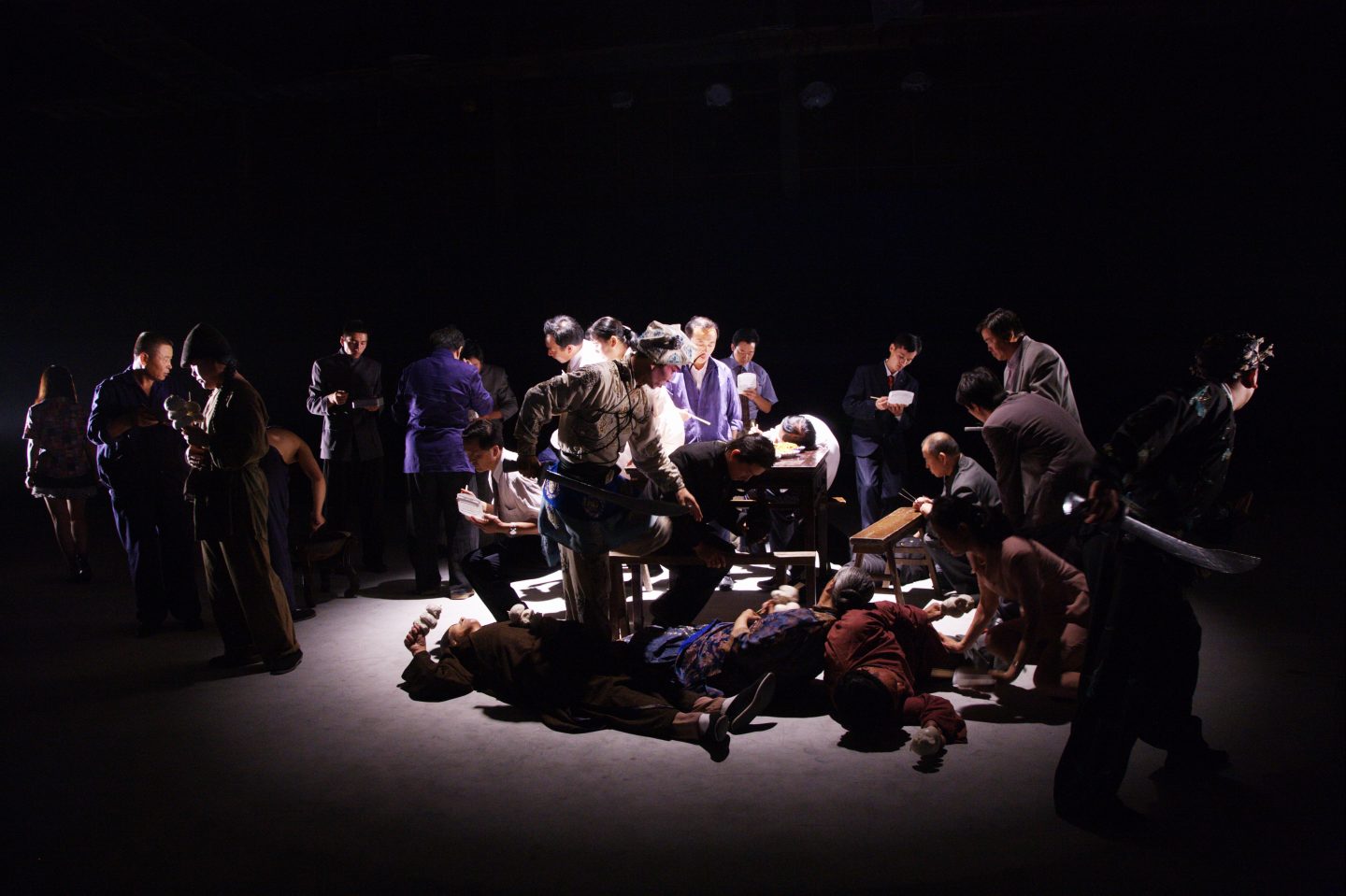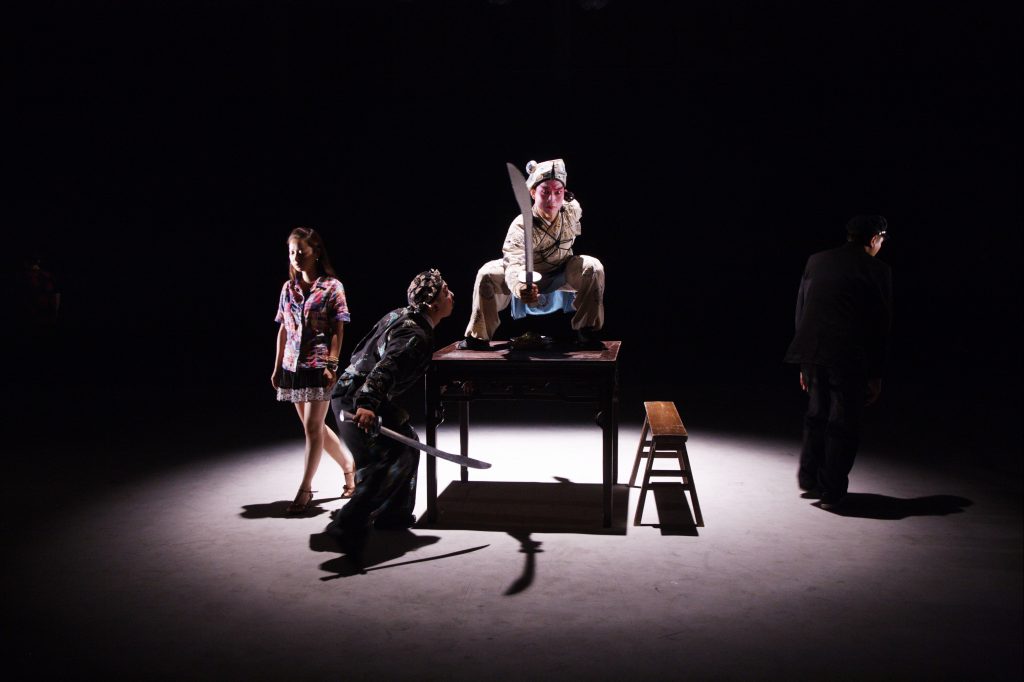Press Release
The idea of “three way fork in the road” comes from a traditional Chinese theater play. Re-interpreting a historical text provides me with a new way to continue and expand my work. If we use history as a temporal dimension, how can time create a new kind of relationship with today’s society? In the play of Three Way Fork in the Road, we see that through the means of re-designing body language and performance, space can be filled with co-existent contradictions. In order to be seen, or more precisely to be seen by others, a space has to maintain the conditions suitable for being seen (including lighting, volume of the space and so on). However, in the performance of being seen, a performer needs to affirm his self-existence in the dark. In such a “normal” space, a body is divided into double. Each decides on its own performance under guidelines provided by the other. The two factors are equally important and stand side by side in space. One factor is how do the two bodies in the dark interact with each other; and the other is how such an interaction can be completely seen by others? The metaphor of “three way fork in the road” comes closer to the relationship of presenting and concealing. It is about the compression of time and the overlapping of space, instead of its cultural meaning or a worship of tradition.
It helps me to understand how to present different system in the same space, and how to construct a stage that is “visible” and “invisible” at the same time. Perhaps it is a way of making links? Here, the body is a single fundamental unit, as well as a platform for making connections. Each body is, to varying degrees, decided by “other” units. The “other” units include history, culture and education, and they can even build a massive web of relations. Just as Umberto Eco has said, in every thing there possibly exists an encyclopedia. When we make efforts to perform our “selves,” to some degree we also use the knowledge and experiences of “others.” It is even possible to say that we only pass on the experiences of “others,” or we are only intermediaries between the experience of the past and future. “I” can step on a stage as an individual, but at the same time I am entangled with completely different sets of knowledge. Such a relationship always exists in a grey area. Just like the relationship between a word and an object, the relationship between language and body is always uncertain and full of ambiguity. Is there a possibility to build a stage capable of more precisely presenting the juxtaposition of multi-systems?
I want to try to build such a “stage,” where all the individual performers have multiple aspects, including the visible and the invisible, the real and the hypothetical. These bodies are at the same time physical proofs of the real world and symbols that connect all kinds of desires. They are signs of a certain period of history but also void of any specific historical meaning. Time is no longer a linear document. The present, the past, men, women, workers and farmers, they all seem to have their own trajectory, but they also transcend the limits of time and role. Real desires and anonymous memories are interwoven to form a complex web. Do they exist between imagination and ambiguity? They maintain a relative synchronization within different orders; they are introspective presences in public space; they share the same space but ignore each other. This is a stage filled with normality and abnormality. It is my experiment with video, and my understanding of the world that I live in.
Wang Jianwei
September 2007
Artworks
Three way fork in the road
Video DVD(VOB)720*576px ,Blu-ray, color, stereo sound
10mins
